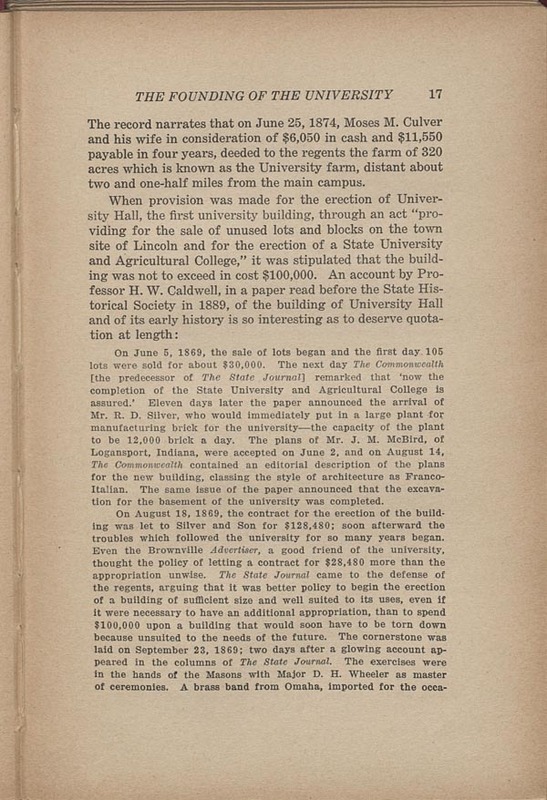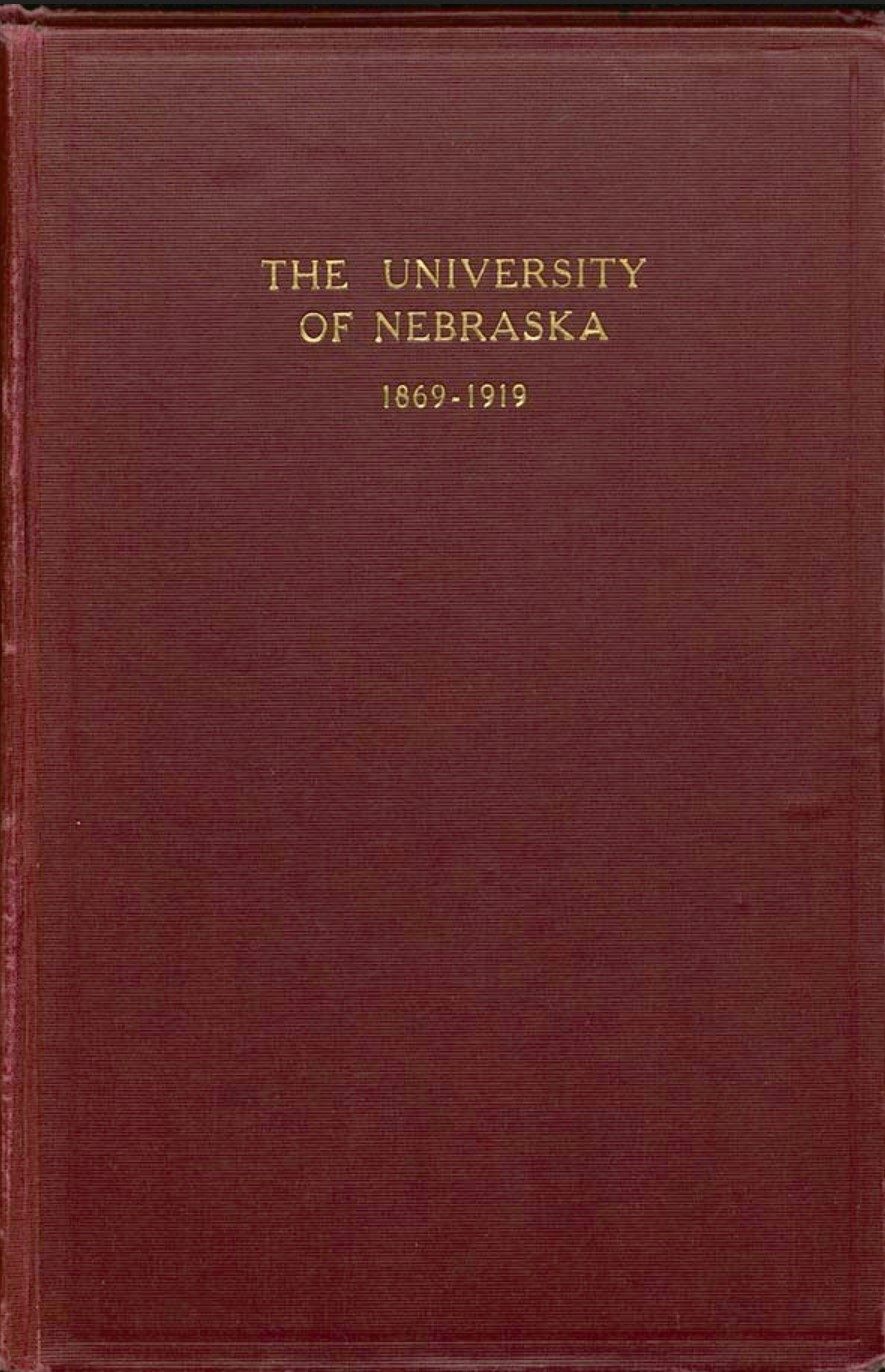021
Item
-
Title
-
021
-
Description
-
Semi-Centennial Anniversary Book: The University of Nebraska, 1869-1919
-
Transcription
-
The record narrates that on June 25, 1874, Moses H. Culver and his wife in consideration of $6,050 in cash and $11,550 payable in four years, deeded to the regents the farm of 320 acres which is known as the University farm, distant about two and one-half miles from the main campus.
When provision was made for the erection of University Hall, the first university building, through an act "providing for the sale of unused lots and blocks on the town site of Lincoln and for the erection of a State University and Agricultural College," it was stipulated that the building was not to exceed in cost $100,000. An account by Professor H. W. Caldwell, in a paper read before the State Historical Society in 1889, of the building of University Hall and of its early history is so interesting as to deserve quotation at length:
On June 5, 1869, the sale of lots began and the first day 105 lots were sold for about $30,000. The next day The commonwealth [the predecessor of The State Journal] remarked that 'now the completion of the State University and Agricultural College is assured.' Eleven days later the paper announced the arrival of Mr. R. D. Silver, who would immediately put in a large plant for manufacturing brick for the university—the capacity of the plant to be 12,000 brick a day. The plans of Mr. J. M. McBird, of Logansport, Indiana, were accepted on June 2, and on August 14, The Commonwealth contained an editorial description of the plans for the now building, classing the style of architecture as Franco-Italian. The same issue of the paper announced that the excavation for the basement of the university was completed.
On August 18, 1869, the contract for the erection of the building was let to Silver and Son for $128,480; soon afterward the troubles which followed the university for so many years began. Even the Brownville Advertiser, a good friend of the university thought the policy of letting a contract for $28,480 more than the appropriation unwise. The State Journal came to the defense of the regents, arguing that it was better policy to begin the erection of a building of sufficient size and well suited to its uses, even if it were necessary to have an additional appropriation, than to spend $100,000 upon a building that would soon have to be torn down because unsuited to the needs of the future. The cornerstone was laid on September 23, 1869; two days after a glowing account appeared in the columns of The State Journal. The exercises were in the hands of the Masons with Major D. H. Wheeler as master of ceremonies. A brass band from Omaha, imported for the occa-
-
Rights
-
To inquire about usage, please contact Archives & Special Collections, University of Nebraska-Lincoln Libraries. These images are for educational use only. Not all images are available for publication.



